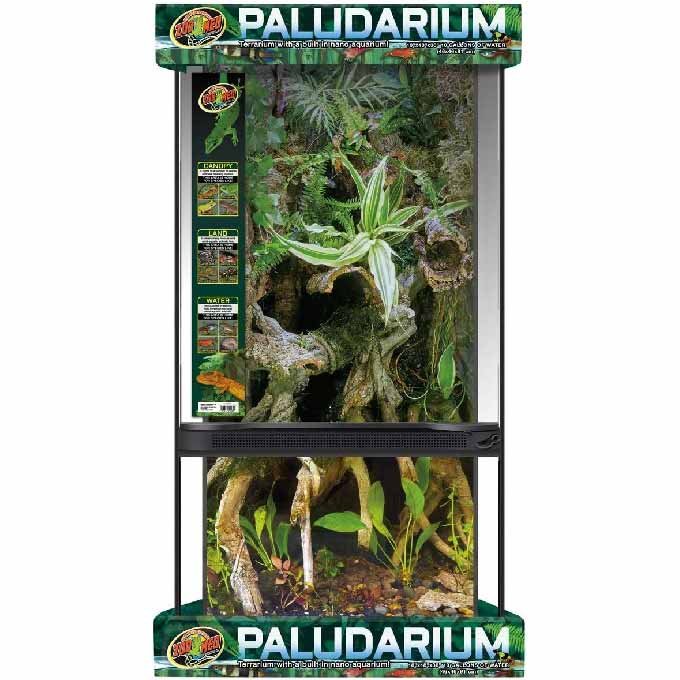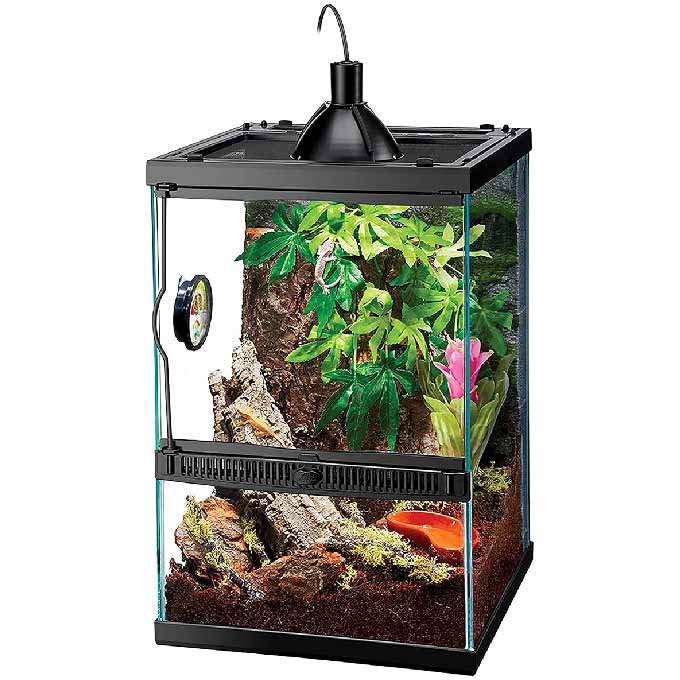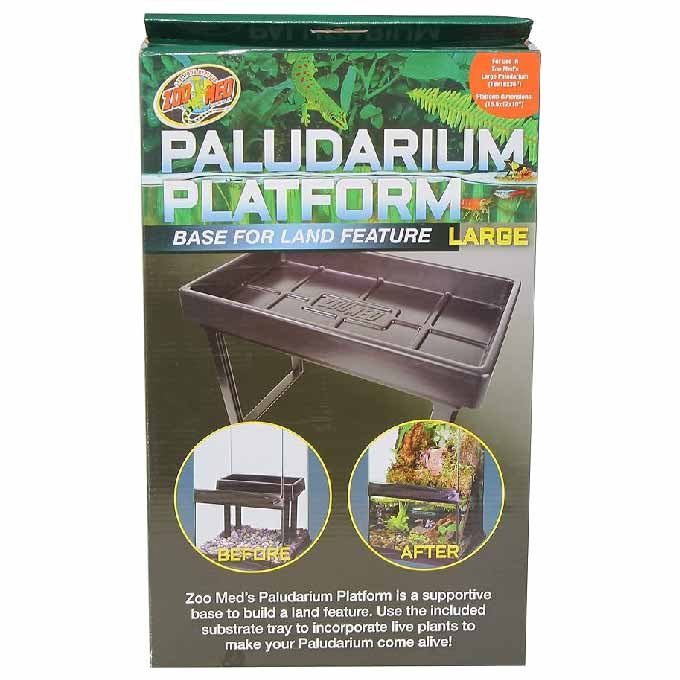How to Build the Perfect Aquatic Terrarium or Paludarium for Your Pet
If you are considering creating an aquatic terrarium or paludarium tank for a pet such as a turtle, amphibian, or semi-aquatic reptile, for example; you are in for an exciting mission (we couldn’t define it in another way). Both terms refer to the same type of enclosure that blends land and water, imitating a natural ecosystem for several species.
With the right stuff, you can create a beautiful and functional habitat that help your pets to stay healthy.
What is an Aquatic Terrarium or Paludarium?
An aquatic terrarium or Paludarium (it doesn’t matter how you call it), is a hybrid enclosure that provides both terrestrial and aquatic environments. These setups are ideal for species that thrive in mixed habitats, allowing them to move between land and water freely.
You are going to need attention to much details in order to create an appropriate paludarium, But, don’t worry, it’s relatively easy to do it, just have clear that your pet’s comfortability depends of several things. For example: ensure that the environment supports both plants and animals appropriately.
Key Features of a Paludarium
A paludarium tank has distinct features that make it considerably different from a standard fish tank or reptile terrarium. It’s important to understand that all the stuff you are going to choose to create your paludarium will impact in one way or another your pet’s health. You can consider next points:
- Use a partially submerged land area with vivarium wood for climbing species.
- Be sure to have a water section with aquatic plants (similar to a fish tank) environment.
- It’s a must have a terrarium waterfall kit to maintain humidity and water circulation.
- Appropriated ventilation will be really appreciated for your pet. Heating elements to support tropical or temperate species will be important either.
How to Make an Aquatic Terrarium
You know your turtle deserves the best life possible. Setting up a paludarium tank is the key to offer that kind of status to your pet. The goal is to create a balanced environment that meets the needs of both land and water-dwelling animals (For sure, there is enough emphasis in this content about it, right?). Follow these steps to ensure a thriving and well-maintained ecosystem.
1. Choose the Right Tank
Selecting the appropriate tank size is crucial for the well-being of your pet. The tank should be large enough to provide adequate space for movement, basking, and hiding areas. Different species require different tank sizes, so research is key.
- A 30 gallon fish tank terrarium could be enough for small pets.
- Larger species require a 40 gallon reptile tank or bigger.
- A front opening terrarium is recommended for easy access.
2. Set Up the Water Section
The water section of your aquatic terrarium is going to be vital for hydration and maintaining humidity. In the other hand, filtration and circulation are essential to keep the water clean and prevent stagnation.
- Use hydroballs as a drainage layer.
- Install a terrarium waterfall filter to maintain clean water.
- Add a terrarium waterfall pump to keep water circulating.
- Include a reptile fountain for additional hydration.
3. Create the Land Section
The land portion of your paludarium should provide dry resting spots, climbing structures, and basking areas. Many reptiles and amphibians require both water and land to regulate their body temperature properly. Keep in mind the next stuff:
- Use ABG mix as a substrate for plant growth.
- Incorporate vivarium wood and rocks for climbing structures.
- Provide a basking area for reptiles, such as an aquatic turtle tank platform.
4. Select Plants for Your aquatic terrarium
Choosing the right plants is really important for creating a realistic and self-sustaining ecosystem. A combination of aquatic, semi-aquatic and terrestrial plants will help maintain humidity levels and improve air quality.
- Aquarium plants for the water section.
- Terrarium plants for the land section.
- Plants that grow in water to create a natural transition zone.
5. Choose the Right Animals
A paludarium tank can house a variety of species, but it is crucial to select animals that thrive in both land and water environments (for sure, you wouldn’t want to see your cat inside your paludarium) Research the specific needs of your pet to ensure a suitable setup.
Many reptiles and amphibians thrive in a paludarium, including:
- Turtles (aquatic turtle tank species)
- Salamanders (tiger salamander for sale options)
- Small reptiles (reptile terrarium species)
Maintaining Your Paludarium
Maintenance is absolutely necessary to keep your aquatic terrarium clean and healthy. By implementing a simple routine, you can prevent common problems such as water contamination, mold growth and plant decay.
To ensure a healthy and functional aquatic terrarium, follow these maintenance tips:
- Water Quality: Use a terrarium waterfall filter and change water regularly.
- Humidity Levels: A repti flo 200 system helps maintain proper moisture.
- Temperature Control: Use heat lamps and UVB lighting.
- Plant Care: Trim vivarium plants and remove dead leaves.
- Cleaning: Remove waste from the water section to prevent algae buildup.



